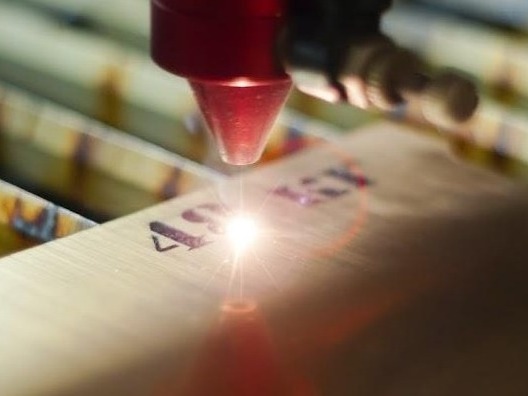Etching, Engraving, Or Marking?
Although lasers are used in etching, engraving, and marking, there are subtle differences between the three processes. While 'laser etching' is popularly used to mean any laser tooling process, it really isn't a scientifically accurate description, and laser cutting is something else entirely.
In reality, there are three broad core categories of laser-powered ablative tooling. Each method uses unique control mechanisms, techniques, and heat intensity levels to produce vastly different visual and physical effects.
1) Laser Etching
Laser etching is a simple, light-touch way of slightly denting more delicate and heat-sensitive materials via soft melting. Etching is used to make metal backplates, 'mount on' metal plates, and ID tags.
Etching is a high-temperature process that uses flash, dotted laser metal against durable metals to create a distinct surface-level abrasion. Quick, shallow, greyscale dot-matrix laser imprints form onto surfaces in under a minute.
Advantages:
• Ideal for automated serial, info, and QR code etching
• Fast, relatively cheap, and permanent
• Vaporises minuscule amounts of metal (less than 0.0001 cm)
• Variable, deep fades, and shades
• Better than inking and stickers - water, stain, and scratch resistant
Disadvantages:
• Only compatible with highly durable, reactive materials (e.g. Aluminium, iron, stainless steel)
• Lower image resolutions than traditional printing
2) Laser Engraving
Laser engraving is very similar to etching - yet creates a deeper, darker, and stronger impression.
Using a steadily pulsing motion and exposing the material beneath to longer, hotter bursts of an intensely focused laser beam, engraving can drill out shallow, variable-depth channels. Cavities can be adjusted and formed to create text or carve a complex, detailed dot-matrix 2D print.
Advantages:
• Quick turnaround times
• Multiple passes can greatly strengthen impressions
• Compatible with tough metals, polymers, graphite, and plastics
• No plate mounting required
• Better precision cuts and matrix resolution
• Fantastic legibility
Disadvantages:
• Often struggles with thinner sheet materials and fabrics
• Not ideal for parts that must be completely smooth
3) Laser Marking
Laser marking is an oxidisation-based detailing method that can scorch on two-tone, black and white surface impressions. It's sometimes called laser blackening or charring.
Instead of cutting in or down, laser marking burns microscopic parts of the surface to discolour it (via metal fatigue, warping, ingraining, or carbonation). It's also compatible with materials where high-intensity laser cutting would otherwise be too energy or heat-insensitivity (e.g. titanium, high-grade stainless steel).
As with etching methods, you'll often find laser marking used to create barcodes, QR marks, logos, and serial numbers on PCBs and electronic components.
Advantages:
• Excellent wear-and-tear resistance
• Cost-efficient
• Smooth - leaves surface mass completely intact and dent-free
• Helps protect highly sensitive alloys
• Denser, darker, precise patterns
• Low heat requirements - uses far less energy
• Diverse process types (i.e. Chemical, scorch, layer removal)
• High resolution and contrast
Disadvantages:
• Relatively slow process times
• Uncommon - nearby engraving services may not offer you marking
• Not suitable for certain plastics and soft metals
Next Steps
At HGL Systems, we can offer laser engraving and laser cutting services. Our design engineers are always keen to work with customers to overcome any manufacturing challenges and bespoke requirements. Contact us to discuss your next project.


Follow Us